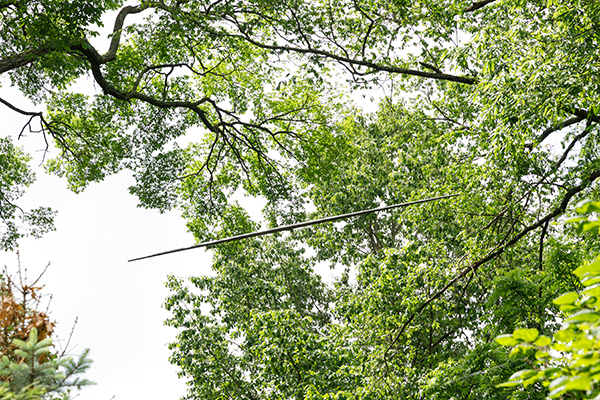One of George Rickey’s later works, One Line Horizontal Floating is emblematic of the linear, reflective, and animated sculptures for which he became known. Here, a single thirty-foot blade of steel is suspended in the air, from a single wire, between trees. The specific location for the work, behind the Historic Mansion & Museum, was approved by Rickey. A vista stretching all the way to downtown Nashville perfectly frames the sculpture, which gracefully floats and moves with the wind. Also referred to as “The Moving Finger Writes,” the sculpture is tapered, thinner at each end than it is at the center. Rickey may have referred to his sculptures as “useless machines,” but the reflectivity and shine of materials like stainless steel calls the viewer’s attention to both the dynamic sculpture and the ever-changing surrounding landscape.
Rickey was a pioneer of kinetic, or moving, sculpture, but unlike his twentieth-century contemporaries, never incorporated electricity or motors in his work. Instead, he relied on precise calibration and wind currents to activate his sculptures. To accomplish such feats and construct such technically complex pieces, Rickey drew from his engineering background. His father worked as a mechanical engineer and managed the Singer Sewing Company in the United Kingdom. During World War II, Rickey served in the Army Air Corps, testing computing instruments used in bombers, work that required proficiency with machines and knowledge of wind power physics. Both would prove fundamental to the development of his innovative sculptural practice.
